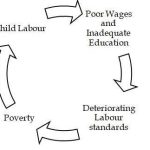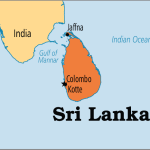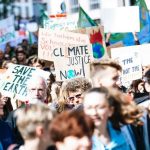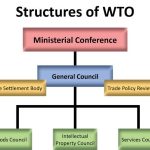
• The Department of Peace Operations is in charge of peacekeeping for the United Nations. This is a “instrument” that was made by the organisation to help countries torn apart by war make the conditions for lasting peace.
UN Peacekeepers keep an eye on the peace process in places where a war has ended and help former combatants carry out any peace agreements they may have signed.
This kind of help comes in many ways, such as measures to build trust, agreements to share power, help with elections, strengthening the rule of law, and economic and social growth.
• The first time the UN Peacekeeping Forces were used was in 1948, when the UN Security Council gave permission for UN armed observers to be sent to the Middle East.
• So, UN troops, who are often called “Blue Berets” or “Blue Helmets” because they wear light blue berets or helmets, can be soldiers, police officers, or civilians.
• The United Nations Charter gives the UN Security Council the power and duty to work together to keep peace and security around the world.
Because of this, the international community usually looks to the Security Council to give permission for Chapter VII peacekeeping missions.
• The United Nations sets up and runs most of these activities, and its troops serve under its operational control. In these situations, troops are still part of their own armed forces. They are not a separate “UN army” because the UN doesn’t have one.
• When the Council doesn’t think it’s right or possible for the UN to get involved directly, it gives permission to regional organisations like NATO, the Economic Community of West African States, or coalitions of willing countries to keep or maintain peace.
Table of Contents
Financing
• The financial resources for UN peacekeeping operations are the responsibility of all UN member states.
• The Security Council makes decisions about the start, maintenance, and growth of peacekeeping operations.
• The General Assembly divides the costs of peacekeeping based on a formula set up by member states that takes into account, among other things, the relative economic wealth of member states.
Structure
• A UN mission to keep the peace has three power centres:
The Special Representative of the Secretary-General is the mission’s official leader.
o This person is in charge of all political and diplomatic activities and oversees relations with both the parties to the peace treaty and the UN member states in general. o The Force Commander is in charge of the military troops that are there.
o They are a top officer in their country’s armed forces, and they usually come from the country that is sending the most troops to the project.
The Chief Administrative Officer is in charge of supplies, operations, and making sure that all needed supplies are bought.
Peacekeeping in India and the UN
• India is firmly committed to helping the UN keep international peace and security.
• India has a proud history of UN peacekeeping that goes back to the 1950s.
• India is the largest democracy in the world and has a strong tradition of respecting the rule of law. It also has a lot of experience building nations, which makes it a good fit for peacebuilding in the twenty-first century.
India now sends the most troops to UN peacekeeping activities (UNPKOs) than any other country.
Indian troops have served in 49 of the 71 UNPKOs that have been sent out so far.
India has 7,676 people serving in 10 of the 16 active UN Peacekeeping Missions. This makes India the second biggest troop contributor (TCC) in the world.
India was the first country to send an all-female group to a UN Peacekeeping mission in 2007. 179 Indian soldiers have died in UN Peacekeeping activities over the past 60 years. It has the most deaths among “blue helmets” of any country.
Since 1950, India has helped out with the following projects that are worth mentioning.
India has sent two Infantry Battalion groups and has helped with engineering.
What are the most probable reasons for Fatalities?
• Both from a political and a security point of view, the atmosphere in which peacekeeping activities take place is getting worse.
• In a lot of operations, especially big ones like those in Africa, soldiers go up against criminal or terrorist groups that like chaos more than peace and security.
How can these fatalities be controlled?
• Peacekeeping activities must keep the balance and evenness of a place’s geography.
• It will take a lot of work to grow the number of countries that provide police and peacekeeping forces from different parts of the world.
• India has come up with a 10-point plan to help UN peacekeeping operations around the world deal with security and operational problems.
For operations to be successful, the leaders of a peacekeeping team must build trust and make sure the host country works well with them.
The countries taking part in peacekeeping efforts, not the Security Council, should set the agenda.
Peacekeeping missions should be sent out in a smart way, with a full understanding of their boundaries.
Goals that are clear and are backed up by enough means.
“All-out efforts” should be made to bring to justice the people who did bad things to peacekeepers.
It is important for putting a stop to violent conflicts and building global security against threats from the outside.
When keeping the peace, using cutting-edge technology can help solve security problems.
When evaluating a mission, you should think about the military, the civilians, and the people in charge of the goal.
Peacekeeping deployments should think about a “exit strategy” from the start.
The host government is in charge of making sure people are safe from non-state groups that operate on its land.
Is UN Peacekeeping Losing its Appeal?
• Until the fall of the Soviet Union in 1991, most global wars were caused by competition between the United States and the Soviet Union. This made it important for an impartial army to stand between them.
But most modern wars, like those in Bosnia-Herzegovina and Rwanda in the 1990s and Syria and Iraq today, are too messy and chaotic for the old model of keeping the peace to work.
• The things that make policing work well no longer exist. For example, the same groups that made it easy to call a cease-fire no longer exist.
• Also, the missions, which are sometimes dangerous and cost a lot of money, don’t have much backing in the West.
France is in charge of a mission to fight terrorism in Mali, but it is trying to cut back on its role and end the mission, in part because of pressure at home and an election coming up.
• Also, less support for keeping the peace in the West is making its way to sub-Saharan Africa.
Peacekeepers and other foreign forces will leave a hole that neither Malian nor Somali troops can fill. The withdrawal from Afghanistan marks the end of an era and, for now, the end of long-term stabilisation operations in faraway places.
It gives all Western countries a chance to think about how they use their force as a tool of their foreign policy.
UN Peacekeeping: Critical Analysis
• Effects that are good
There is a lot of proof that peacekeepers make it much less likely that war will start up again. More peacekeepers mean fewer deaths on the battlefield and in civilian areas.
There is also evidence that promising to send in troops can help international organisations get warring parties to the negotiating table and make it more likely that they will agree to a stop to the fighting.
• Concerns
During UN peacekeeping operations, there have been reports of UN soldiers breaking people’s rights, especially in Central African Republic in 2015.
The cost of these missions is also very high. For example, the mission in South Sudan, which has 12,500 UN troops but can’t stop the country from moving towards civil war, costs $1 billion per year.
Also, missions often need permission from local governments before they can send troops, which can also make UN missions less successful.
In a study published in the American Political Science Review in 2021, it was found that the presence of UN peacekeeping missions had a weak link to rule of law when there was a war going on, but a strong link when there was peace.
Way forward:
• Analysis by Brahimi: The Brahimi Report was the first of many steps to look back on past peacekeeping missions, find problems, and fix them so that future peacekeeping missions will work well.
The UN has promised to keep doing these things when it does peacekeeping activities in the future. These things include: o making the working conditions of field staff and headquarters staff the same.
o putting together rules and standard working procedures.
• The need for a quick response force
To avoid delays in action and deployment, it might be good to have a standing group that is run by the UN and sent out by the Security Council. This group would get its troops and support from current Security Council members and be ready to go quickly if there were another genocide.
• The United Nations peace and security architecture needs to be changed. The goal should be to make the peace and security pillar more coherent, flexible, and effective by putting prevention, keeping the peace, and delivering on Agenda 2030 at the top of the list.
• Other reform efforts in this area include:
• The Capstone Doctrine (2008), which outlines the most important principles and rules for UN peacekeepers on the ground;
• Peace Operations 2010 (2006), which contains the reform strategy of the Department of Peacekeeping Operations (DPKO);
• The 2005 World Summit, which created the Peacebuilding Commission;
• The High-level Panel on Threats, Challenges, and Change, which laid out a broad framework for collective security for the new century.
















